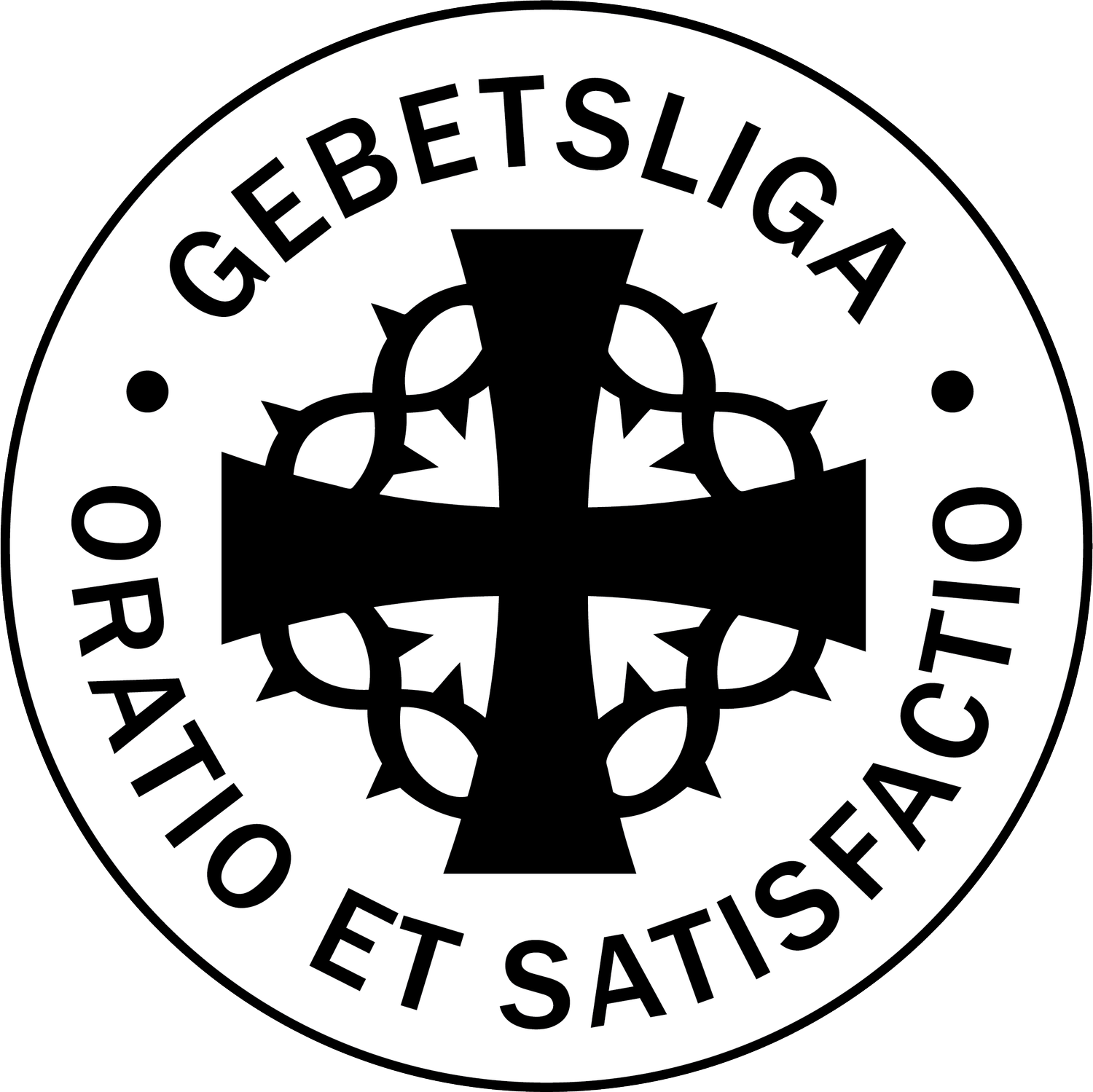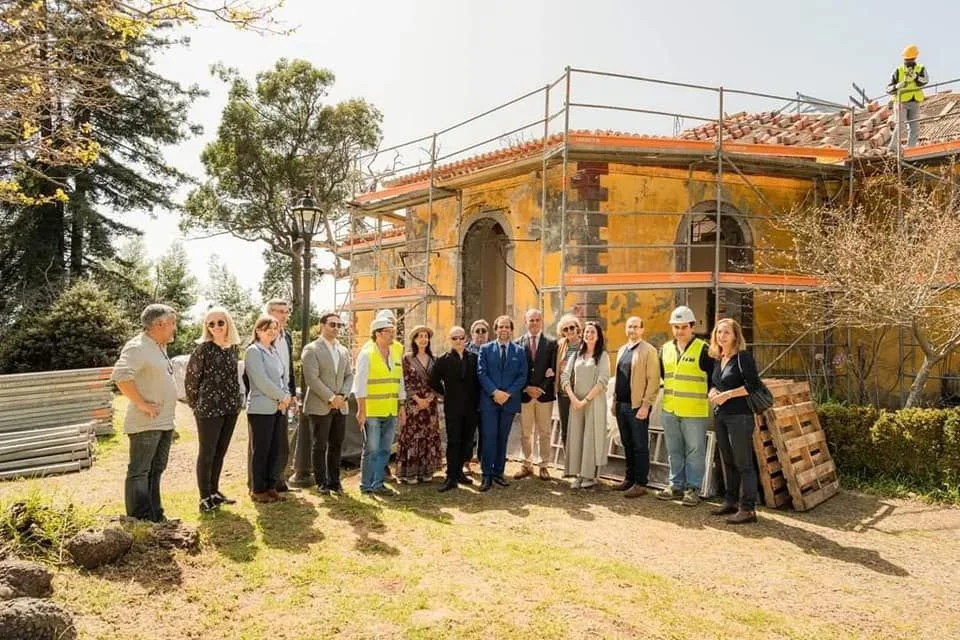House in Which Emperor Karl Lived During Exile to be Restored
In 2015, the Government of Funchal, Madeira, began plans for the restoration of the Villa Quinta do Monte, the house in which Emperor Karl and his family lived during exile. Plans included the restoration and reconstitution of the house and gardens, with a new Museum of Romanticism and restoration of the rooms connected to the life of Blessed Karl. Sadly in August 2016, a catastrophic fire ravaged the island of Madeira and the capitol, Funchal, destroying the Villa and 37 houses. Several people were also injured and killed.
Finally, after years of inactivity, in January 2025 the Government announced plans to revive the project with an ambitious completion date set for year’s end. Below is a translation of the news story which appeared on January 8 in Diário de Notícias.
Project supports and financiers visit the Villa grounds, Foto DR/Arquivo.
Museum of Romanticism already has more than 200 pieces
By Marco Livramento
To date, the Regional Government's investment in this new museum space, which should open its doors this year, has reached 4.1 million eurosThe project designed for Quinta Jardins do Imperador, which was once Quinta do Monte, suffered a major setback with the devastation caused to that infrastructure by the great fire of 2016.
With an opening date scheduled for this year 2025, after successive postponements, the Museum of Romanticism, which is being held in the former Quinta Jardins do Imperador, in the parish of Monte, already has more than 200 pieces to fill. They were donated or acquired, with an acquisition value by the Regional Government through the Regional Secretariat for Economy, Tourism, and Culture which amounts to 793 thousand euros.
In total, the body supervised by Eduardo Jesus has already spent 4.1 million euros on this project. The largest portion goes to renovation work on the old farm, with a total to date of R$3.3 million. The remainder of the money already spent was invested in the acquisition of pieces of furniture or art to make up the collection of this space, which has been included in the various Government Programs of Miguel Albuquerque's executives.
This year alone, four acquisitions have already been closed, with contracts worth more than R$198 thousand. This set includes, among other pieces, as the guardianship informed, last Monday, in response to DIÁRIO's request dated the end of the previous week, several period paintings (from the 17th century to the 19th century); two bedside tables, one with two shelves and the other with three shelves in mahogany, dating from the end of the 18th century; a Chinese porcelain aquarium; a Namban accountant; wall sconces and chandelier dating to the mid-19th century; a lamp with opal glass; several functional pieces such as the front metals of the living room stove, as well as the kitchen stove; table made of tilde and other wood; a George Hepplewhite sideboard and angle stand; a set of original engravings by Reverend James Bulwer; a set of Persian and Caucasian rugs and a set of Persian rugs; an English wing table and an English mahogany sofa table; an original engraving from the end of the 18th century ‘Vue Du Funchal’; as well as an English cutlery box, made of satinwood with inlaid rosewood and silver applications.
In addition to the most recently acquired pieces, the future museum will also feature other pieces from the Madeiran Executive's estate, as well as around 140 pieces that are in temporary storage, with the Regional Government; these include some ceramics.
As the same source explains, “the Museum's museology should be based on the concept of reconstituting a large Madeiran house or farm from the 19th century, with all its features, functional and aesthetic, very close to the English taste, then dominant, and original to the house itself, and of an aesthetic developed by the so-called Wine Merchants, as well as of art during the time of the Madeira Wine Trade.” This is the line that is already evident in the acquisitions already made, seeking to create a period decorative environment, including that of a living room, dining room, bedrooms or even the kitchen, thus translating the Madeiran taste of 19th century, greatly influenced by the English community, with chronological species from the 18th and 19th centuries.
The first acquisition of works of art made by the Regional Government for this new museum dates back to January 2017. At the time, several paintings were purchased from the company Renascimento - Avaliações e Leilões, worth 171 thousand euros, the highest value to date allocated for a single acquisition for this purpose. The list of other ‘suppliers’ of pieces for the future Museum of Romanticism also include some regional companies, such as Fernanda & Gonzaga Drumond, Lda; John Welch; Jorge Welsh Works of Art, Ltda; among others.
With regard to reconstruction works, it has been the company Socicorreia that has won the tenders launched. This was the case with the main contract in this context, worth practically three million euros, dated September 2021. The intervention was complemented with a new contract in 2023, worth 195 thousand euros, the procedure for which was carried out through prior consultation.
Project launched in 2015
The reconstitution of the then Quinta Jardins do Imperador was appointed by the Regional Government in March 2015, with the purpose of installing the Museum of Romanticism, which the recently installed executive of Miguel Albuquerque highlighted as one of his major proposals in the area of Culture. The property, which had been acquired by the Region in 1982, where the University of Madeira was intended to be located, would once again be transferred to public management, after a difficult concession of private parties.
The concession contract dated 2003 provided for the reconstruction and expansion of what was then known as Quinta do Monte, based, above all, on the recovery of the garden areas. Because all contractual aspects were not complied with, the contract ended up being revoked, with the Regional Government even going to court to reverse the situation. For the work carried out by the tenants, the Region was ordered to pay R$826,000.
“We are going to take over the management and the idea will be, in the main building, to create a nucleus of Romanticism which is intrinsic to the Monte and where we will evoke some personalities who visited Madeira and, also, Emperor Charles of Austria himself,” said the brand new president of the State Government at the time.
In October last year, Miguel Albuquerque reported that “the building is [being] rehabilitated," stating that it was "becoming magnificent,” remembering that the museum space would have a wing dedicated to the presence of Emperor Charles of Austria in Madeira. At the time, he also said that the works, "if everything goes well," would be completed at the beginning of this year.
Therefore, the recovery will be nearing completion, although in March 2023 the State Government indicated that the work would be practically completed. A note then sent by the Presidency stated that the project would be progressing “at a good pace, with the construction of the main house, future museum, and the old stable, future space for educational services and library, being approximately 50% complete.”
At that time it was said that work on the entrance and store, warehouses to support gardeners and museum staff, Malakoff tower, boundary walls, new rough stone paths, fire network and external lighting would already be practically completed.
The investment then estimated at 3.8 million euros, which has already been exceeded, included 3.2 million euros coming from Europe, through the ERDF.
The main house will house the museum's exhibition spaces, offices, reserves, storage rooms and a cafeteria with a covered terrace. The remaining buildings will be adapted to the needs arising from the new use. Casa do Caseiro should function as an entrance, store and security center; in the Malakoff Tower there will be a café with a terrace; the Cavalariça will include educational services and a library; The old Warehouse will house the gardening and museum staff's changing rooms, a cafeteria and a warehouse. The recovery of cobblestone and dirt paths has already been carried out, as well as the recovery and reinforcement of walls and walls. Railings were placed, gates repaired and canals, lakes and fountains were restored.

